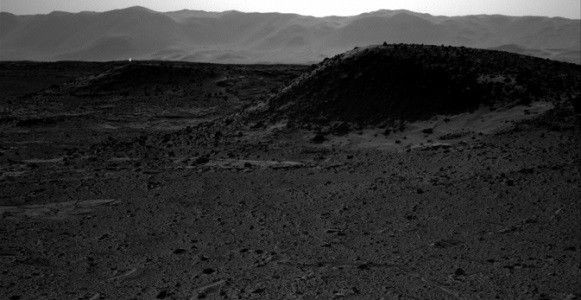NASA Mars Rover Curiosity Nears Mountain-Base Outcrop
Curiosity on its Second Anniversary Approaches Mars's Gale Crater

NASA's Curiosity Rover approaches its first close up of the layered mountain in the middle of Mars's Gale Crater a part of Mount Sharp.
The mission that was launched a year ago is nearing its second anniversary of the landing on Mars. Curiosity found important evidence of ancient lakes and river environments. In its second year, it has been driving towards the lower slopes of Mount Sharp as a long-term science destination, an area 2 miles southwest of its current location. But the outcrop of a base layer of the mountain named 'Pahrump Hills' by the rover team lies closer which is less than 500 metres.
"We're coming to our first taste of a geological unit that's part of the base of the mountain rather than the floor of the crater," said Curiosity Project scientist John Grotzinger of the California Institute of Technology, Pasadena. "We will cross a major terrain boundary."
In the month of July, half the days were spent driving the rover across an area of sharp rocks called 'Zabriskie Plateau.' Due to similar terrain last year there was damage to the aluminum wheels of the rover which resulted in the change of route to avoid rocky terrain whenever possible. The rover steered across the Zabriskie Plateau which is 200 metres without any suitable detour on the redesigned route towards the long-term science destination Mount Sharp.
,Last week, there was unexpected behaviour of an on board computer. Curiosity has duplicate computers. In February 2013, the A-side computer encountered a problem and it has been operating on its B-side computer. The A-side computer was restored in case of B-side runs into any trouble. Commanding the rover had been stopped for two days till the engineers confirmed that the A-side computer was reliable as a backup.
On August 5, 2012, Curiosity landed inside Gale Crater in its first year. It reached its goal by offering proof whether Mars ever had an environment favourable for microbial life. Yellow Knife Bay, an area of the crater floor, yielded evidence of a lake bed environment billions of years ago that had fresh water and all the elements for life and a chemical source of energy for microbes, if any existed there.
NASA's Mars Science Laboratory Project continues to use Curiosity to record the evolution of early Mars, assess ancient habitable environments and major changes in Martian environments.




















